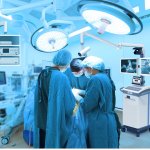
News • EU collaboration proposal
Looking forward to a better European Health Partnership
Health industry sectors, representing pharmaceutical and medical technology companies (COCIR, EFPIA, EuropaBio, MedTech Europe and Vaccines Europe) welcome the publication of the European Partnership for Innovative Health Proposal as a significant milestone towards a European Partnership for Health Innovation. The future partnership will showcase to researchers, patients, and citizens that Europe…


























